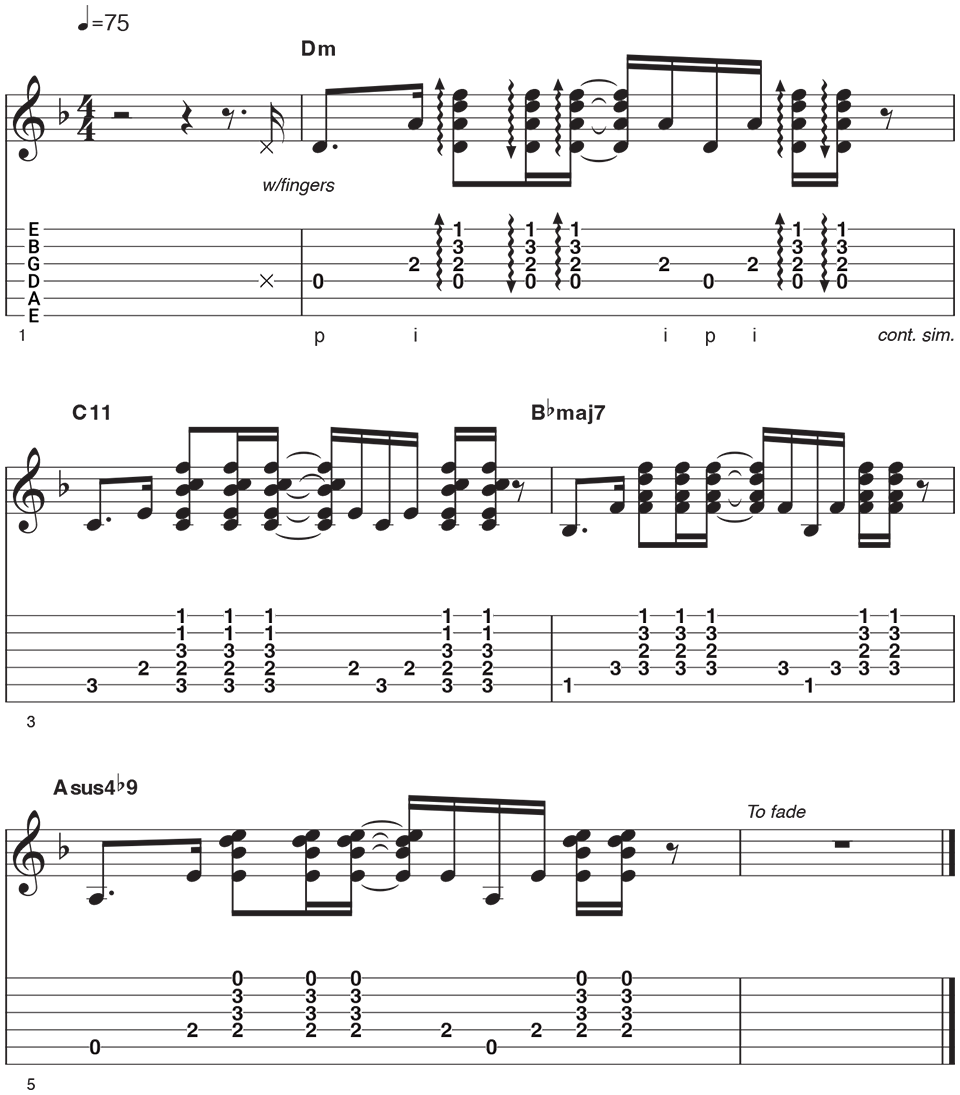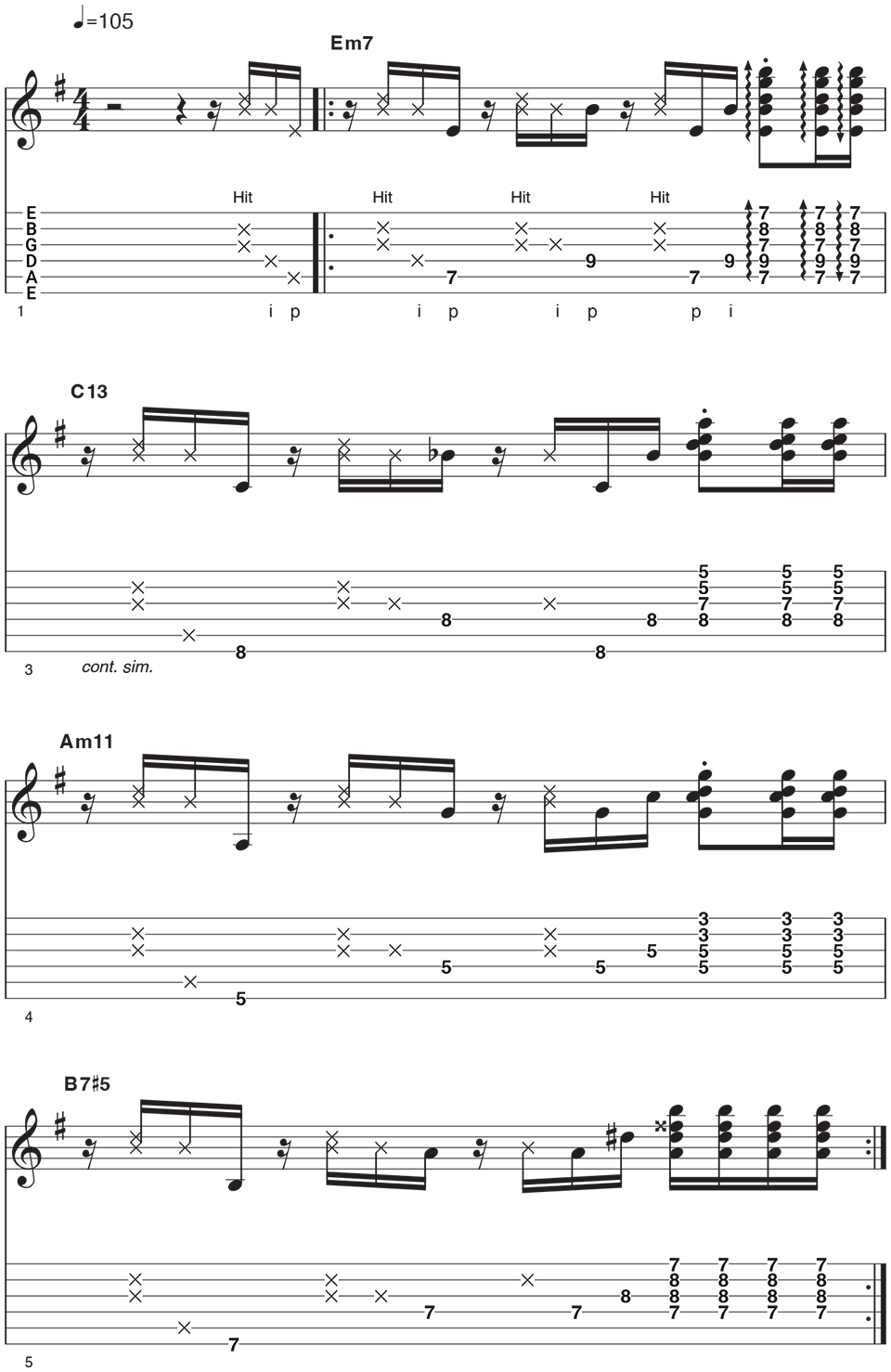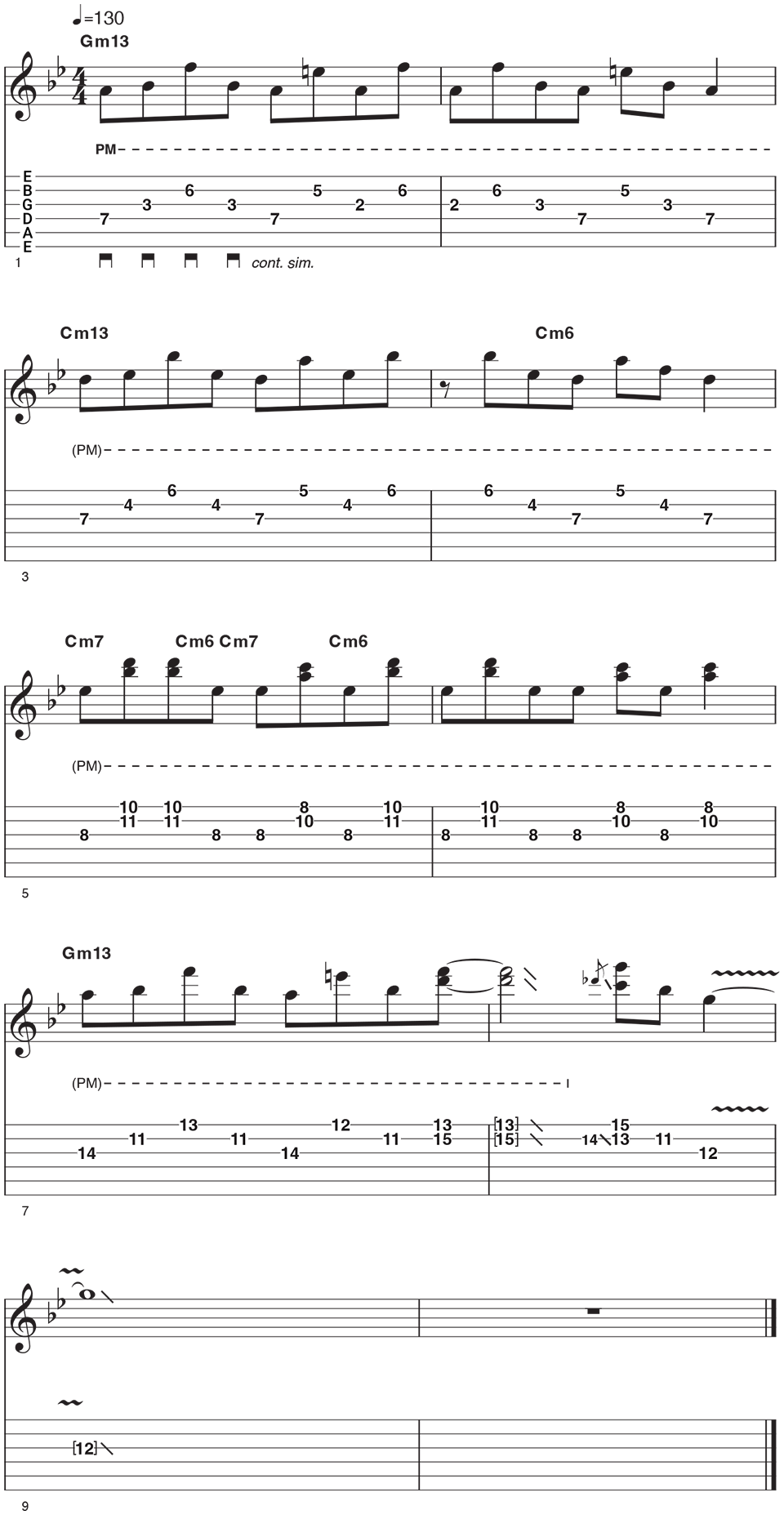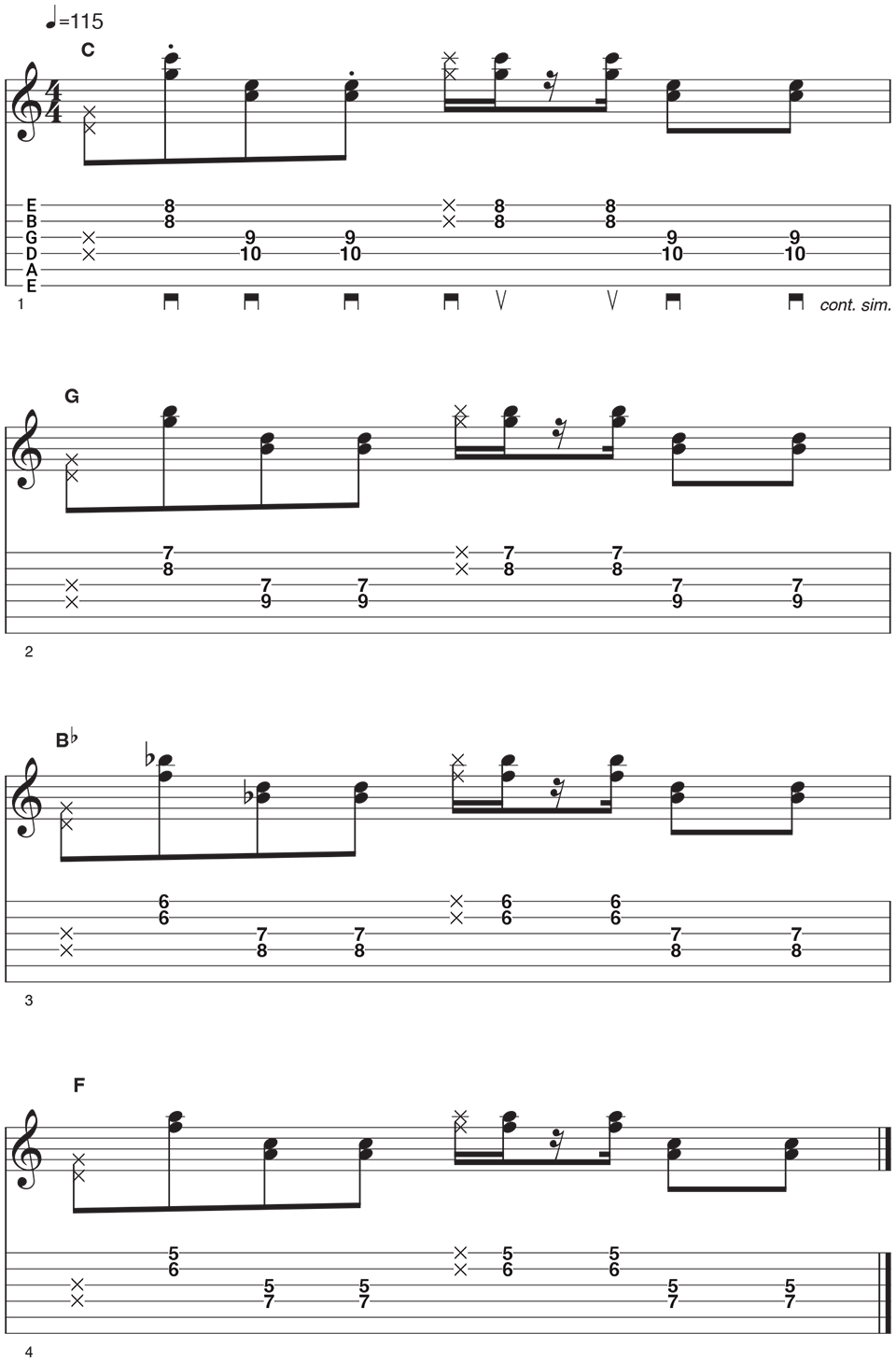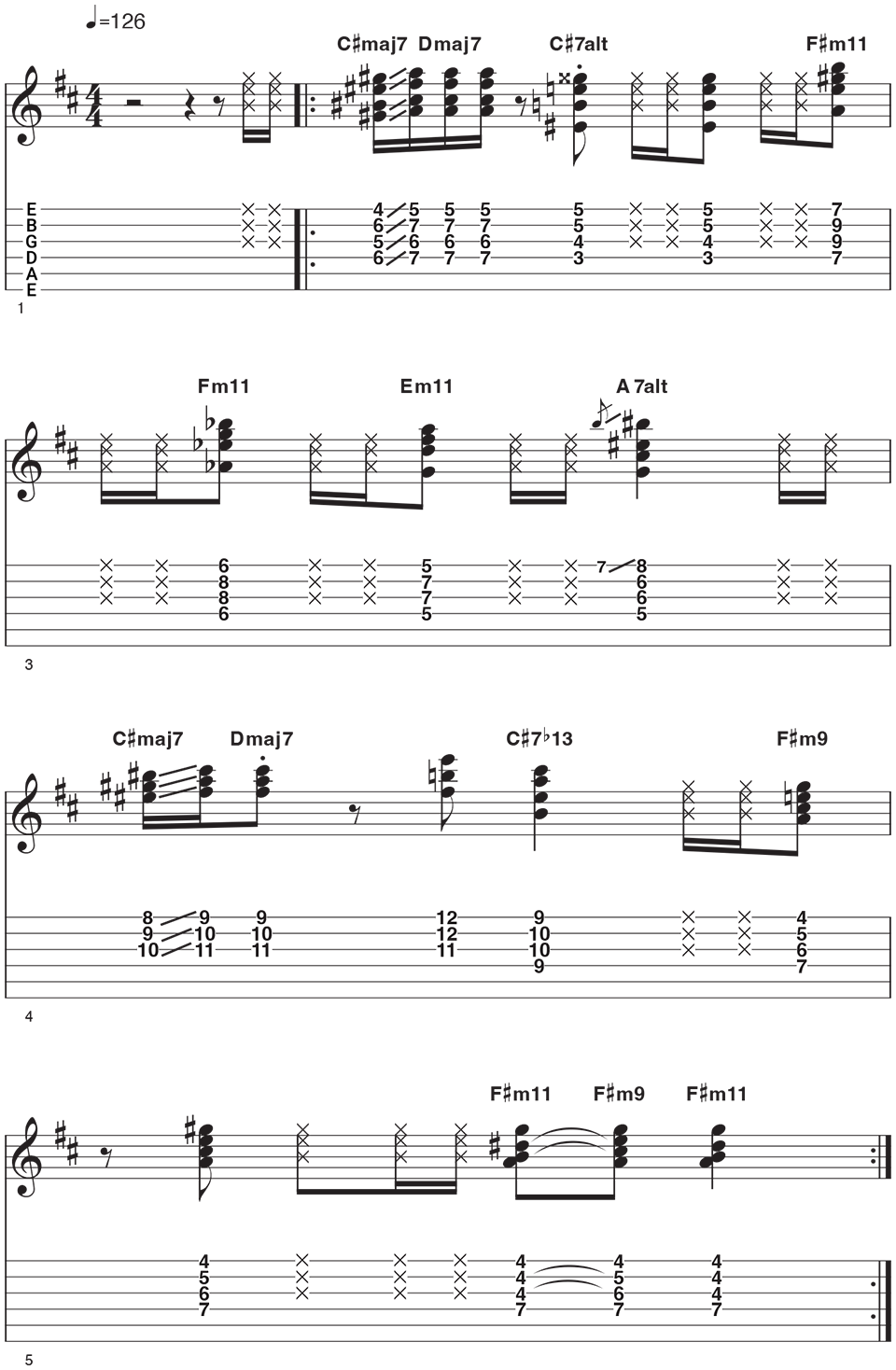Chill Brazil! Add some Latin American cool to your playing with these 6 brilliant Brazilian grooves
Beautiful chord voicings, bossa nova fingerpicking styles and infectious funk-pop syncopations – João Gaspar's tutorial will take your guitar chops to the next level

Brazilian guitarist João Gaspar is known for his versatility and ability to blend traditional music with jazz, rock and contemporary styles. Through this fusion blend, Gaspar has developed a distinctive approach that combines rhythmic complexity with melodic sophistication while incorporating classic elements found in samba, choro, bossa nova and rhumba.
In this exclusive video, he plays a nylon-string guitar and a few clean-toned electric guitars for six different Brazilian examples. The nylon-string guitar is a classic sound linked heavily to Brazilian music. Early trailblazers such as Baden Powell and João Gilberto adapted fingerstyle nylon-string tone and fused it with Afro-Cuban rhythms and Brazilian music styles, helping to form a popular template for samba and bossa nova guitar playing.
For the electric guitar, a clean amp tone is ideal for extended chords and crisp rhythms that are easily heard and can cut through a typical song mix. However, when you tackle these six examples, feel free to experiment on whatever guitar you have available.
For each example, João first plays at an ideal tempo and then again slowly, so you have more time to watch the playing in detail. After this, he discusses and demonstrates the techniques, chords and general theory involved.
Certainly, if you hanker for new rhythms or sophisticated chord voicings, you'll go from simple open-position fingerings, such as Dm and Bbmaj7, right through to extended harmony that you’d expect to hear in Brazilian music (e.g. Gm13 and C#7alt).
To help you get these examples under your fingers, we've included key picking and strumming directions, as João is great with both fingerstyle technique and using a pick.
As ever, the devil is in the detail. With slow practice and an awareness of what you're aiming for, you'll soon develop a consistent feel and groove that people would like to dance to. Now, on to the examples!
All the latest guitar news, interviews, lessons, reviews, deals and more, direct to your inbox!

Jon Bishop is a U.K.-based guitarist and freelance musician, and a longtime contributor to Guitar Techniques and Total Guitar. He's a graduate of the Academy of Contemporary Music in Guildford and is a touring and recording guitarist for British rock and roll royalty Shakin’ Stevens.
Example 1: Rhythmic fingerstyle chords
This fingerstyle example uses the open first and second strings to enhance the fretted notes. First off, it's worth singing the rhythm to get the right feel, especially if it's new to you. We then recommend playing the rhythm slowly as you master the chord fingerings, then increasing the tempo. The pattern moves between great-sounding voicings of Emaj9 and B9sus4 (also referred to as A/B). The colorful Lydian chord at the end (Emaj7#11) is the icing on the cake and adds a little exotic tension.

Example 2: 16th-note strumming
This features a fingers-based strumming pattern that is repeated throughout. Start with a thumb pluck (shown as p under the tab), followed by a first-finger pluck (shown as i under the tab) and then a down-up-down strum (again, using the first finger).
The fundamental harmony is quite straightforward (it's a I-bVII-bVI-V progression), and the chords are played in the open position. However, the smooth Bbmaj7 and the spicy Asus4b9 are more jazzy sounding and help to enrich the progression.
Concentrate on the picking-hand strumming in bar 1 first as it's largely the same for each bar. Then work your way through each chord shape so they flow smoothly under your fretting-hand fingers.

Example 3. Funky single notes and chord bursts
This next example is pretty demanding, as it introduces a funky Latin flavor in the style of the great Brazilian guitarist and singer Djavan. The fingerpicking pattern uses a mix of syncopated muted strings and clipped single notes that dart around the main beats, so dial this in slowly.
The pattern starts with a muted hit down on the strings, followed by a muted pluck from the first finger and then a thumb bass note. Each bar is finished off with a four-string chord using down-down-up strums. Get this sorted and you'll sound very funky!

Example 4: Muted down picking
This example has a pop Latin feel, enhanced by extended minor-chord arpeggiating on a clean-toned electric guitar. The key technique to work on here is down picking accurately while maintaining the palm-muted down picks. You're after consistent dynamics and a warm tone.
Practice this slowly at first to improve precision and stamina and reduce strain. To finish, João breaks out of the patterns with a blues-style lick in G minor.

Example 5: Colorful double-stop strumming
This is a crossover of styles, with the harmony inspired by Ivan Lins and the rhythms of Djavan. The rhythmic accents are on beats two and four of the bar, with much of the playing involving double-stops (two notes sounded together). Again, João sings the rhythm before performing it.
The strumming is split across the bottom and top portions of the chord. This is reminiscent of funky strummers like Nile Rodgers, who break chord shapes into high/low string zones to create more variety.

Example 6: Funky and sophisticated chord syncopation
This final example is a fast jazz funk–style offering. The chords use extended harmony (e.g. 9ths and 11ths, plus altered chords), which creates a sophisticated sound. Observe that all the chords are mainly played on the top four strings. This higher string playing allows the guitar to sound bold and bright, cutting through the overall band mix — a key strength of experienced groove-based guitarists.
Don't overlook the ghost notes, as they are an essential ingredient, providing hi-hat–like percussion to the rhythm. Lastly, sliding into chords from a semitone below is an expressive funk element, and João uses it several times here.

Three Brazilian Groundbreakers You Should Know
João Gilberto
João Gilberto is widely credited with being one of the pioneers of bossa nova. He played intricate, subtle fingerstyle parts on a nylon-string guitar. His chord progressions often borrowed a lot from jazz-style harmony using mellow-sounding chords, including major 7, minor 7 and the 6/9 chord. Gilberto’s recording of "So Danco Samba" typifies the style, with Gilberto’s understated vocal floating on top of his gentle, yet rhythmically precise guitar accompaniment.
Djavan
Djavan is a widely celebrated Brazilian singer-songwriter known for blending jazz, funk, samba and pop. His smooth vocals, poetic lyrics and sophisticated sense of harmony have earned him a lasting place in Brazilian music history. One of his most famous songs, "Oceano," showcases a classic use of romantic lyrics and musical depth. This live version, reminiscent of the original studio recording, features a great nylon-string guitar solo from 2:28.
Baden Powell
Baden Powell was a groundbreaking guitarist known for fusing classical nylon-string guitar techniques with Afro-Brazilian rhythms, in the bossa and samba styles. His recording of "Canto De Ossanha," by Vinicius de Moraes, is a rhythmically intricate piece that blends samba and candomble. The syncopated guitar rhythms and dramatic vocals create a powerful fusion that has a haunting and intoxicating vibe.

João has gained recognition through his work with the João Gaspar trio. João also has many session album credits including playing live with Brazilian superstar Ivan Lins. João is a forward thinking guitarist whose style fuses traditional elements with a modern sensibility to provide a contemporary package. Through his solo projects and collaborations he has made his mark on the Brazilian music scene.

